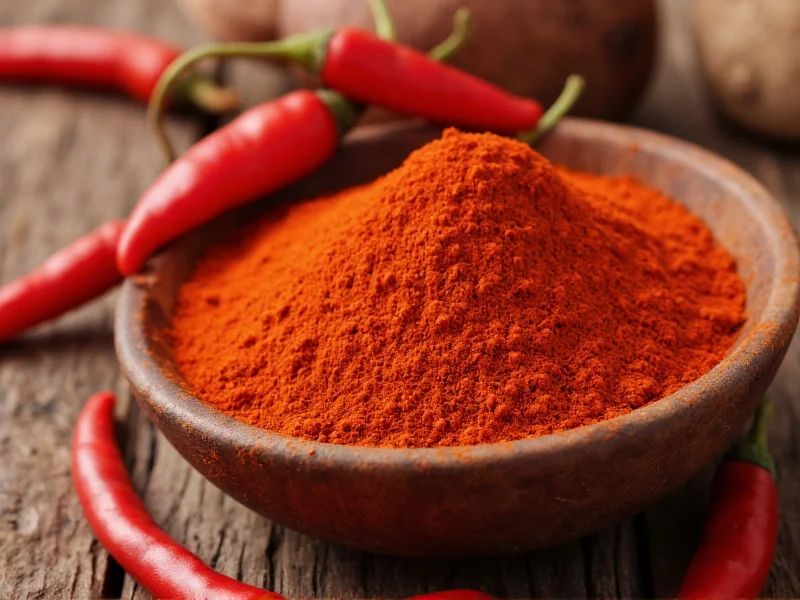Cayenne paprika occupies a unique space in the spice spectrum, bridging the gap between sweet Hungarian paprika and pure cayenne pepper. Understanding this distinctive spice helps home cooks and professional chefs alike make informed decisions about when and how to use it for optimal flavor results.
What Exactly Is Cayenne Paprika?
Cayenne paprika refers to a specific type of paprika made exclusively from cayenne peppers (Capsicum annuum), rather than the bell peppers or milder chili varieties used in traditional sweet paprika. The peppers are harvested at full ripeness, dried thoroughly, and then ground into a fine powder. This process preserves both the vibrant red color and the characteristic heat that defines this spice.
Many consumers confuse cayenne paprika with regular cayenne pepper powder. While both come from the same pepper variety, cayenne paprika typically contains the entire dried pepper including the skin and flesh, resulting in a more complex flavor profile with moderate heat. Pure cayenne pepper often consists primarily of the seeds and placenta (the hottest parts), delivering significantly more intense heat.
Heat Level and Flavor Profile Comparison
Understanding where cayenne paprika falls on the heat spectrum helps determine appropriate usage in recipes. The following table compares common red pepper spices:
| Spice Type | Scoville Heat Units | Flavor Characteristics | Best Culinary Applications |
|---|---|---|---|
| Sweet Hungarian Paprika | 0-500 SHU | Earthy, sweet, slightly fruity | Goulash, deviled eggs, potato salad |
| Smoked Spanish Paprika (Pimentón) | 100-2,000 SHU | Smoky, sweet to moderately spicy | Paella, chorizo, roasted vegetables |
| Cayenne Paprika | 30,000-50,000 SHU | Bright, moderately hot with sweet pepper notes | Marinades, spice rubs, tomato-based sauces |
| Pure Cayenne Pepper | 50,000-100,000 SHU | Intensely hot, sharp, minimal sweetness | Hot sauces, Cajun seasoning, small heat boosts |
Culinary Applications: When to Choose Cayenne Paprika
Cayenne paprika shines in recipes where you want noticeable heat that doesn't overwhelm other flavors. Its moderate heat level makes it ideal for:
- Marinades and rubs - The balanced heat penetrates proteins without causing excessive burning during cooking
- Tomato-based sauces - Complements acidity while adding warmth to pasta sauces, salsas, and stews
- Roasted vegetable preparations - Enhances caramelization while adding subtle heat
- Mayonnaise and aioli variations - Creates a more complex spicy spread than pure cayenne would provide
- Seafood seasoning blends - Adds warmth without overpowering delicate fish flavors
When substituting cayenne paprika in recipes calling for regular paprika, use approximately one-third the amount to achieve similar heat levels while maintaining the intended flavor balance. For recipes specifying pure cayenne pepper, you'll need to increase the amount by about 25% to achieve comparable heat.
Health Benefits and Nutritional Profile
Cayenne paprika contains capsaicin, the compound responsible for chili peppers' heat, which has been studied for several potential health benefits. A single tablespoon (6g) provides:
- Approximately 20 calories
- 20% of the daily value for vitamin A
- 15% of the daily value for vitamin E
- Significant amounts of vitamin B6 and iron
- Antioxidants including carotenoids and flavonoids
Research suggests capsaicin may support metabolism and provide temporary pain relief when used topically. The vitamin A content supports healthy vision and immune function. Unlike pure cayenne pepper which often requires careful dosing, cayenne paprika's moderate heat level makes it more accessible for regular culinary use while still delivering these nutritional benefits.
Storage and Quality Considerations
To maintain optimal flavor and color, store cayenne paprika in an airtight container away from light and heat. Properly stored, it retains peak quality for 6-12 months. Signs of degraded quality include:
- Faded color (should be vibrant red)
- Diminished aroma
- Clumping or moisture
- Musty or stale smell
When purchasing, look for products with a clear production or expiration date. High-quality cayenne paprika should list only "cayenne peppers" as the ingredient without fillers or anti-caking agents. The finest varieties come from specific growing regions known for optimal pepper development.
Common Substitutions and When They Work
When cayenne paprika isn't available, these substitutions can work in a pinch:
- Regular paprika + pinch of cayenne - Combine 1 teaspoon sweet paprika with ¼ teaspoon cayenne pepper for every teaspoon of cayenne paprika needed
- Crushed red pepper flakes - Use half the amount, but note the different texture and more intense heat
- Chipotle powder - Provides similar heat with smoky notes (use ¾ the amount)
- Hot paprika varieties - Check labels for heat indicators; Hungarian hot paprika works well as a 1:1 substitute
Remember that substitutions alter the flavor profile, so adjust other seasonings accordingly. For dishes where cayenne paprika's specific balance is crucial (like certain marinades or spice blends), seeking the authentic ingredient yields the best results.
Practical Usage Tips for Home Cooks
Maximize cayenne paprika's potential with these professional techniques:
- Add early in cooking for deeper flavor integration in slow-cooked dishes
- Use in finishing dishes where you want brighter, more pronounced heat
- Bloom in oil before adding other ingredients to intensify flavor
- Combine with complementary spices like cumin, garlic powder, and oregano
- Start with smaller amounts and adjust to taste—heat perception varies by individual
For those sensitive to heat, pair cayenne paprika with dairy products or acidic ingredients like lemon juice or vinegar, which can help balance the spiciness without eliminating the distinctive flavor.











 浙公网安备
33010002000092号
浙公网安备
33010002000092号 浙B2-20120091-4
浙B2-20120091-4